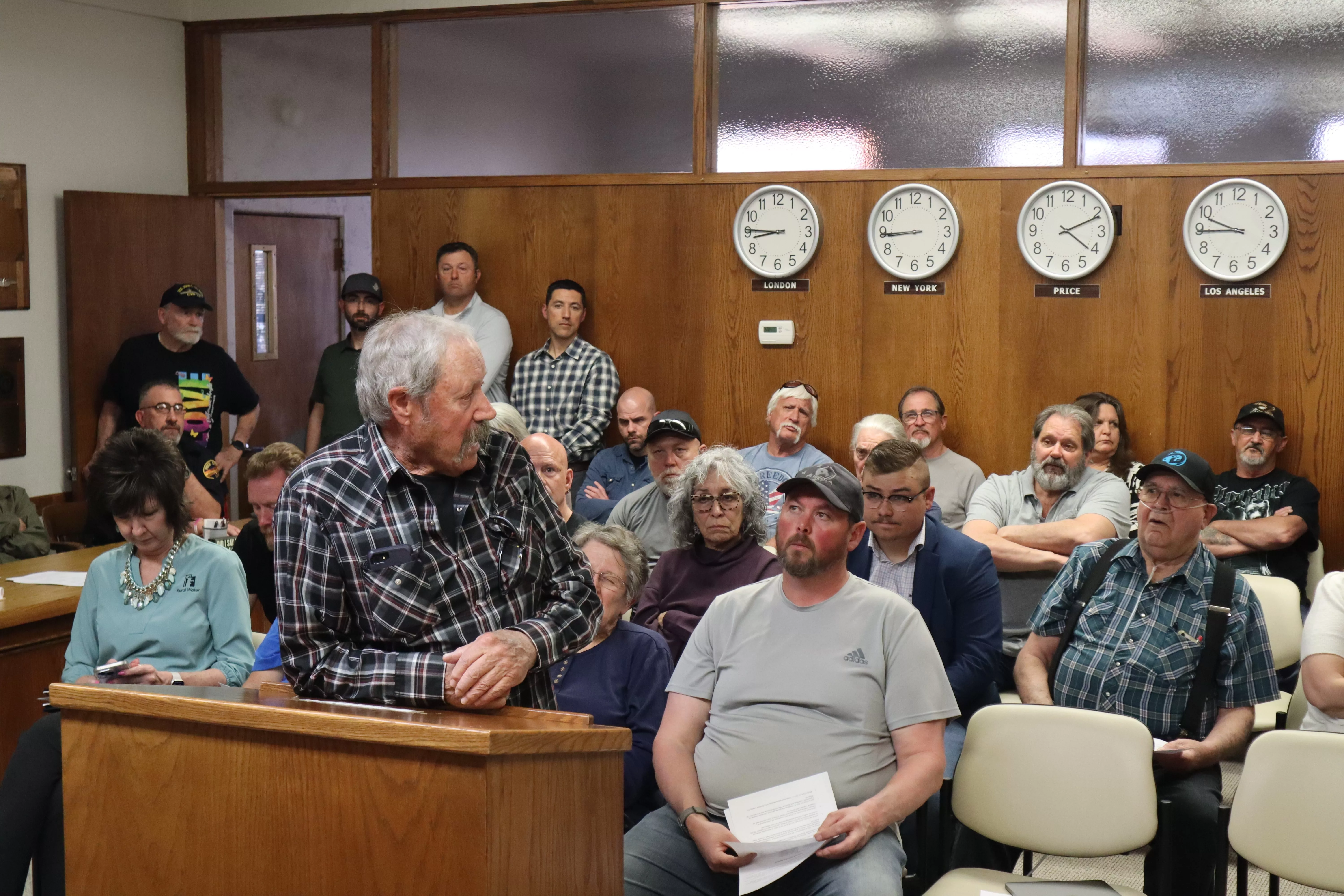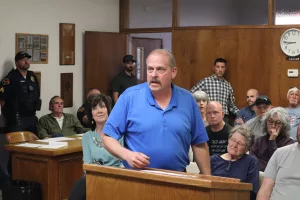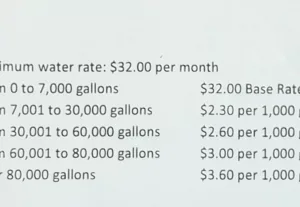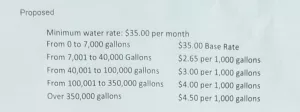
By Aidan Mortensen | KOAL News
On Wednesday, April 9, Price City Hall was standing room only, as the City Council Chambers were packed with concerned citizens for a public hearing. The topic of debate was an increase in water rates over the next three years to help fund water infrastructure improvements within the city.
These items came following a meeting in which the city council reopened the 2025 budget to make adjustments for water improvement projects across the city. These projects included sewer cleaning, a water plant consolidation study and a plant upgrade study.
Two hearings were held, with the first hearing regarding spring water transmission line replacement.
Spring Water Transmission Line Replacement
Public Works Director Miles Nelson explained that this upgrade is needed as parts of the city’s current transmission system are over 95 years old. This plan would occur in sections so as not to take down the entire transmission line. Additionally, the city wants to undertake the project during the down seasons, which could allow water treatment plants to still provide water to the city if the line is to go down.
One citizen wanted the city to switch from treated water for the use of secondary water into a separate source, saying that if there was an effort of conservation, they would be considered for more grants. It was explained that even if a switch was made to separate secondary water, the water would still come from the same source. It was also stated that conservation is now expected, not an extra benefit worthy of grants in the eyes of the state.
“As we continue this project, we continue to look at funding sources,” said council member Terry Willis,” if we can do it correctly, we can keep the changes as low as possible.”
Jaron Hansen, representing the Carbon County Farm Bureau, asked the council to proceed cautiously and keep local farmers and ranchers in mind as they advance with these changes. Warning: These communities could lose the incentive to grow due to decreased crop profit thanks to the increase due to line replacement.
When the motion was made to vote, the council passed the measure unopposed.
Culinary Water Rate Changes
“The city is implementing water rate increases to fund essential upgrades in some of the city’s aging water infrastructure, including its spring water transmission line and water treatment plant,” explained Nelson to open the second hearing. “Please anticipate that there will be a series of rate increases implemented over the next three years, with the current increase taking effect on May 1, 2025.”
The city’s rates have not changed for 15 years. An adjustment was performed nine years ago due to a state mandate, but the rate remained unchanged on the lower end.
The city listed four main reasons for this increase:
- Obtaining funding from the State Drinking Water Board for major water improvement projects is necessary.
- Water is a limited resource, and this rate change promotes conservation.
- It is revenue-neutral. However, the city argues that water revenue should be enough to cover the expenses of maintaining and upgrading the water system.
- Timing. The city wants to update the rates before the warmer summer months to adapt to the new rate schedule.
Looking at the second point, the U.S. Drought Monitor indicates almost all of Utah is experiencing either abnormally dry or moderate drought conditions. Price is no exception, falling in the abnormally dry classification.
Janell Braithwaite from the Rural Water Association of Utah explained that the changes are necessary because the city needs to have rates equal to 1.75% of median gross income in rates to qualify for assistance from the drinking water board.
Todd Richardson was concerned about the city government hiding money to get grants. Saying that if the control was returned to the public through the city to – instead of applying for grants – simply take out a loan and let the citizens decide what the rates would be. Richardson also was seeking a guarantee that rate increase money would be only for infrastructure.

“We don’t need that here, we don’t,” said Richardson. “I don’t want to see the government grow; I want it to stay small.”
Others echoed this concern of efficiency, with some wanting to see an efficiency study of the city’s departments to identify where cuts to the government could be made. This led Mayor Micheal Kourianos to say,” We’ve cut where we see where we can. We’re trying to be as efficient as we can. We’re trying to listen to the community while balancing what we have committed to. Where we see inefficiency, we try to cut back.”
In a fiery exchange between Mayor Kourianos and a citizen, the citizen alleged that Kourianos and the council were only pursuing this issue because their reelection was coming up. This prompted the mayor to say, “That’s not my worry. I don’t even care (about reelection), but the bottom line is what’s right behind that transmission line? The water lines. Our crews work around the clock to fix nine leaks. So don’t think that we’re not putting this money to good use … On secondary water, I’m going to say this. Is secondary water more important to you than your water and your sewer? Because our roads suck, and our water lines are right behind it. I think the priority is our water, sewer lines, and roads.”
When every attendee had their say in the discussion, the hearing was closed. When put to a vote, the council unanimously approved the rate increase. These changes will go into effect May 1, 2025.
The rate changes for residential are as follows:
For commercial customers, the changes are:
Price is the latest city in Carbon County to implement water rate changes. Helper initially started this trend in October 2024, raising rates by $6. Starting in Fiscal Year 2025, the rate will increase by $1, and from FY26 to FY34, the rate will increase by $2 each year.
Wellington also faced this debate in February. The purpose behind the Wellington change is tied to the cost of water pump operation. In 2023, it cost $6000 a year to run a pump, a number that has jumped to $8000 currently. Another financial issue the city ran into is pump repairs, which happen on average every five years and cost $5000.


